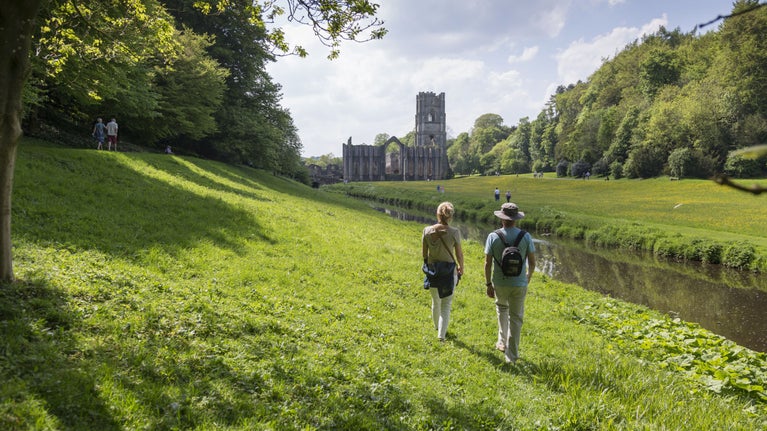
Where will you visit next?
Discover lots of gardens, historic houses, days out at the coast and more.

Original gardens dating from the medieval period – more than 500 years ago – are rare, but sometimes individual elements, such as dovecotes and fishponds, have stood the test of time. We care for several medieval gardens, as well as more recent creations that include features typical of the era, such as formal planting, raised walkways and orchards.
Monasteries and manor houses dictated the garden style of the medieval period.
Monastic gardens provided medicine and food for the monks and local community. Herbs were cultivated in the ‘physic garden’ composed of well-ordered rectangular beds, while dovecotes, fishponds, stewponds (where fish were purged of muddy water before cooking) and orchards ensured there would be plenty of food during the many feast days of the Christian calendar. Dovecotes also provided feathers for cushions and dung for fertilising the garden.
The secluded garden, or ‘Hortus Conclusus’, was associated with the Virgin Mary in the monastery garden, but in royal palaces and manor houses it represented a garden of earthly delights.
Enclosed within wattle fences, raised beds were filled with scented flowers and herbs. Trellis arbours and walkways ensured privacy and provided shade, while turf seats (usually built against walls) were surrounded by a lawn of low-growing wild flowers, and the sound of fountains and bird song filled the air.
Pleasances, or ornamental parks, were created for recreation, relaxation and sport.


Discover lots of gardens, historic houses, days out at the coast and more.

We care for hundreds of historic gardens, encompassing more than 500 years of history and a range of garden styles and fashions. Learn about the most famous and significant gardens you can visit.

The Arts and Crafts movement also influenced garden design, often using the idea of garden 'rooms' to bring the home outdoors. Discover the Arts and Crafts gardens in our care.

If you're looking for an activity-packed family day out, discover a family-friendly castle and enjoy a historic visit for knights and royalty of all ages.

In England, several sites of lost medieval villages can be found at National Trust places. Learn more about these abandoned villages.